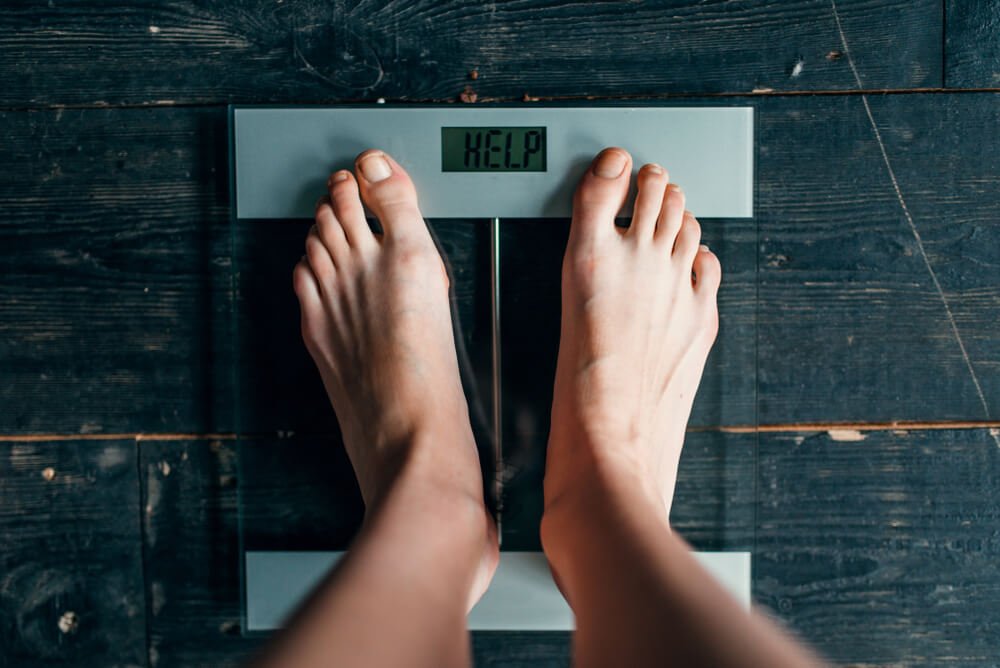Signs and Symptoms of Disordered Eating

Facts About Eating Disorders
WIthin America alone, there are 30 million people who are struggling with an eating disorder at this time. While so many individuals across the nation are battling various eating disorders types, the unfortunate truth is that society has a difficult time talking about this health concern and a social stigma has become present making it challenging for those affected by an eating disorder and body dissatisfaction to reach out for help. It is important for society to break down those stigmas and open up the conversation about eating disorders to ensure that those living with disordered eating can get the help they need before serious, negative consequences occur. In America alone, 4 out of every 10 individuals are living with an eating disorder and nearly 1 person an hour will succumb to their eating disorder and lose their life. There is hope for you to successfully overcome your disordered eating habits with the support of an eating disorder treatment center that will provide you with therapeutic sessions for healing along with the skills to overcome triggers and challenges to allow you to live a healthy lifestyle.
Experience True Healing
Our deeply-caring staff and the surrounding natural beauty offer an unparalleled healing experience.
What is Disordered Eating?
Disordered eating is considered to be both a mental health condition and behavioral concern that is often impacted by disruptions or significant changes in eating habits. Most individuals living with an eating disorder will engage in excessive eating patterns or restrictive or limited eating habits. Patients struggling with an eating disorder will often experience psychological effects such as body dysmorphia that impacts your self-image and distorts your own body image within your mind.
Types of Eating Disorders
There are many variations and types of eating disorders that Americans experience each day. The most common eating disorders that impact American’s lives are:
Anorexia Nervosa
Individuals living with anorexia will often combat distorted body image and perception of self which can lead to individuals wanting to become thinner and thinner. In order to achieve this, individuals will engage in restrictive and limited eating, often going for long periods without eating anything, leading to malnourishment and severe health concerns.
Binge Eating Disorder
Eating large quantities of food until becoming or feeling ill. For many binge eaters, food has become a method of coping or managing unpleasant or triggering emotions and a means of comfort in difficult, trying times.
Bulimia Nervosa
Individuals will engage in binge eating patterns and then purging behaviors will follow including the use of laxatives, self-induced vomiting, or engaging in excessive exercise patterns.
Rumination Disorder
Individuals will put food in their mouth, chew it, and then spit it out or get rid of it to avoid consuming the nutrients and calories.
Pica
Eating non-food items such as dirt, chalk, cloth, etc.
Signs and Symptoms of Eating Disorders
Common warning signs and indicators of an eating disorder are:
- Thoughts and actions are consumed with tracking amount of food being consumed and monitoring caloric intake
- Consuming a large amount of food at one time or going long periods of time without eating anything
- Anxiety or fear about eating in front of others
- Low self esteem about physical appearance
- Engaging in purging behaviors after binge eating
- Obsessive thoughts and actions surrounding your body weight
- Depression
- For those engaging in binging and purging, there is risk of acid reflux developing
- Weakness
- Fatigue
- Significant weight changes or weight loss
Signs and Symptoms of Disordered Eatinghttps://t.co/Y0zrmPD2Uq
— Exclusive Hawaii Rehab (@hawaii_rehab) February 25, 2022
Risk Factors for Developing an Eating Disorder
Depending on which eating disorders types you are living with, there will be different risk factors and predisposing factors that can impact the probability of developing disordered eating.
Common risk factors individuals face when developing an eating disorder are:
- Age of the person living with disordered eating
- Becoming concerned about your appearance and how others perceive you
- Family history with anorexia, bulimia or other eating disorders
- Engaging in excessive dieting
- Having a history of being bullied by others
- History of traumatic events or memories
- Experiencing biases due to the stereotypes about weight
- Living with mental health concerns such as anxiety, depression, impulsive behavior
Eating Disorder Treatment Center
Exclusive Hawaii Rehab offers a specialized treatment program that is designed to support individuals exhibiting disordered eating patterns through comprehensive therapy methods. Our goal is to support you in developing a new relationship with food while supporting a healthy body image with the support of trained medical professionals. Our team will work alongside you to empower you to see the change you want in yourself to achieve the happiness in life and recovery you have been dreaming of.
Experience True Healing
Our deeply-caring staff and the surrounding natural beauty offer an unparalleled healing experience.